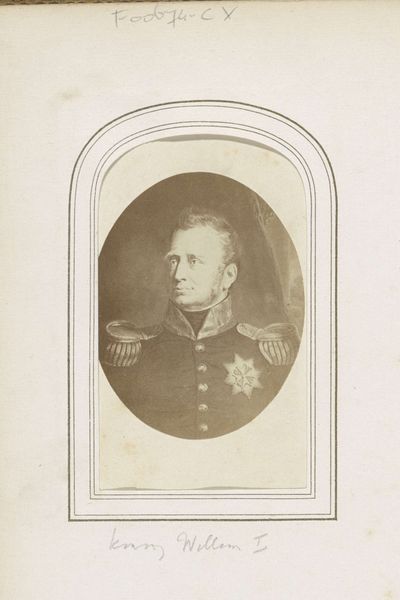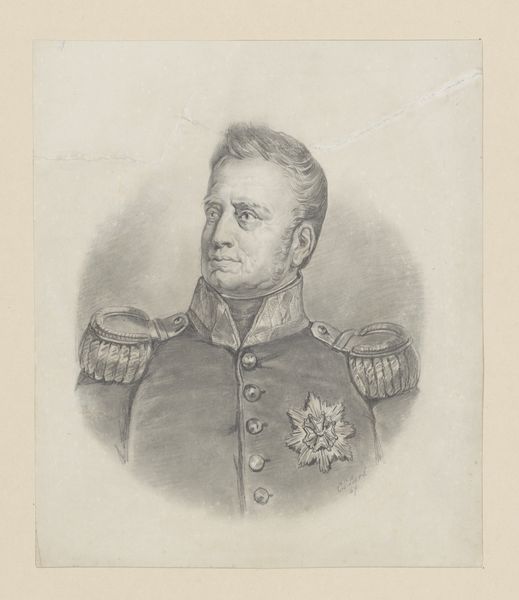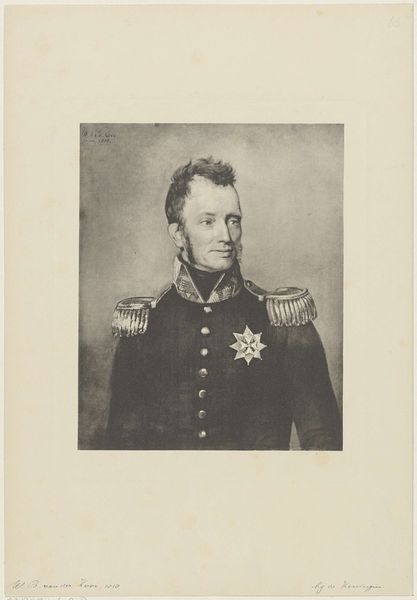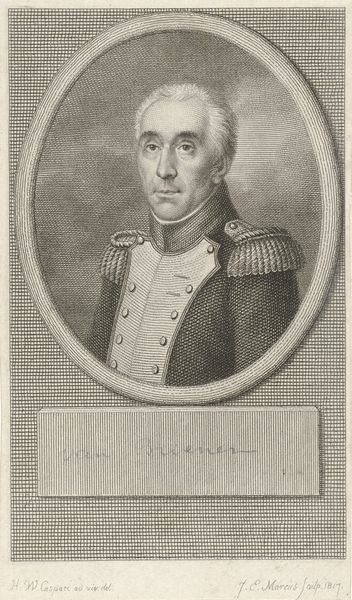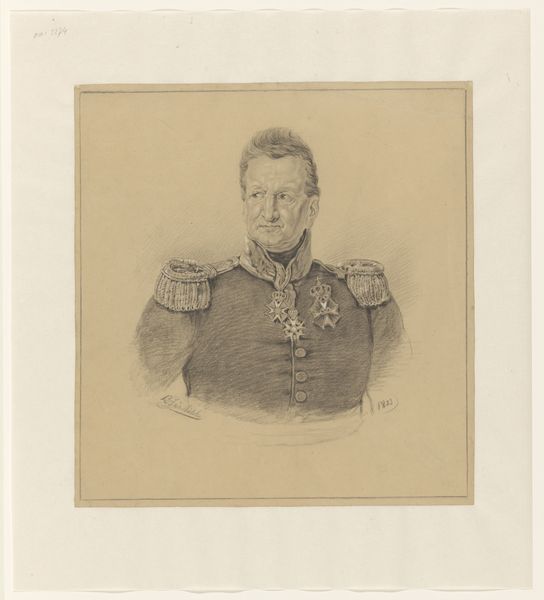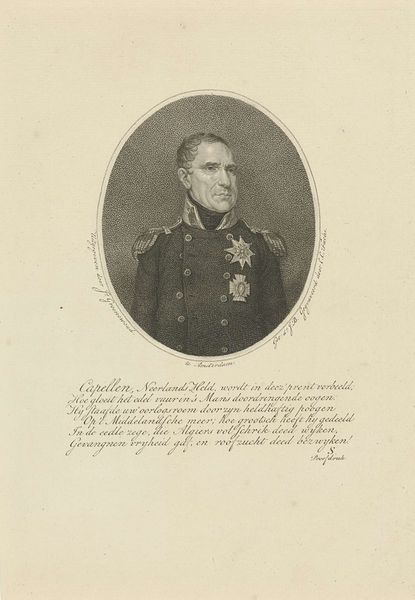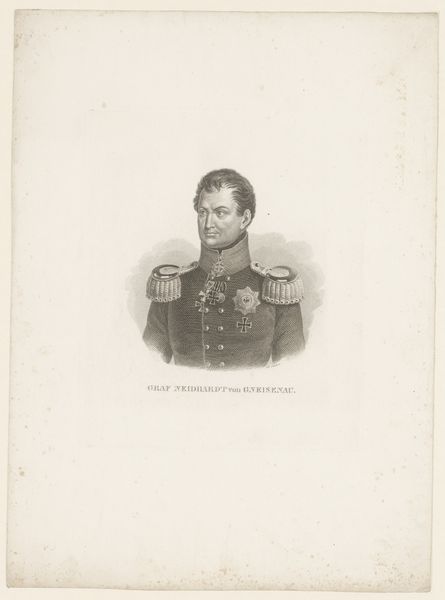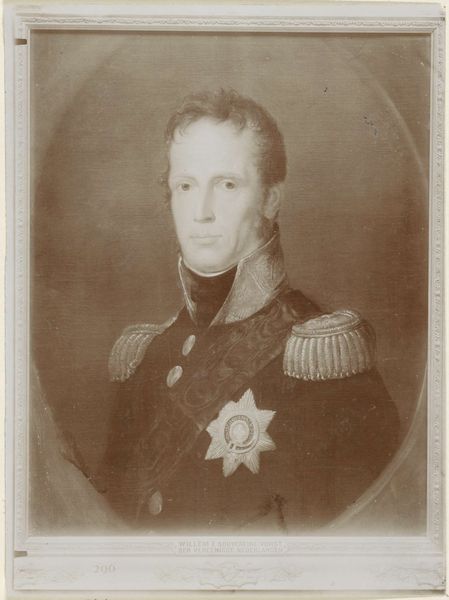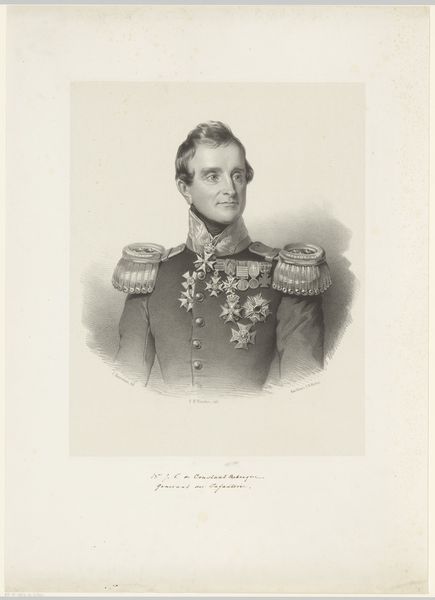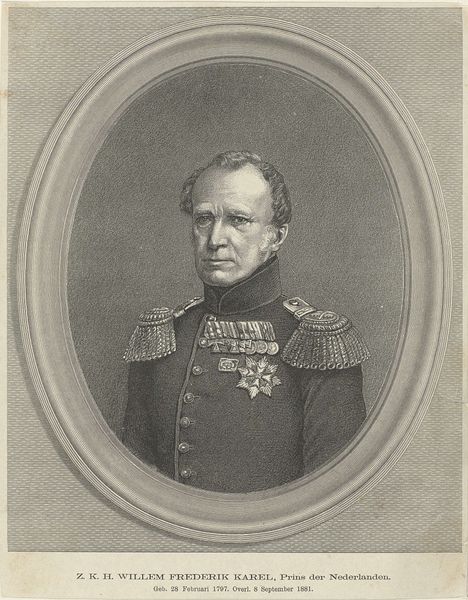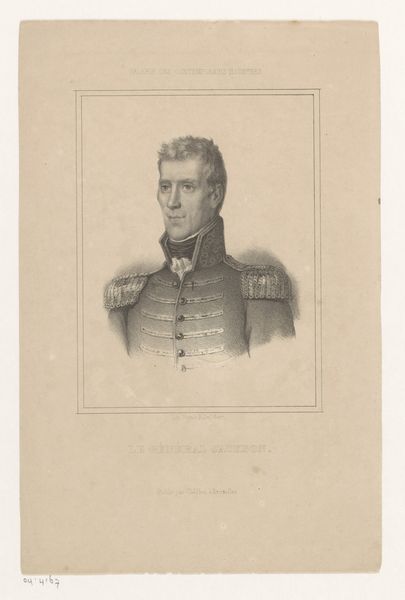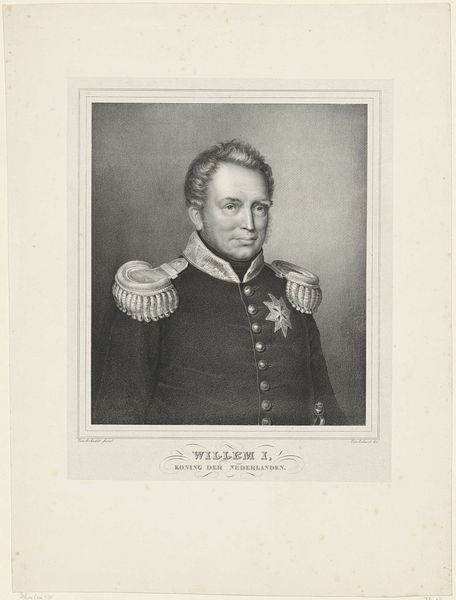
etching
#
portrait
#
neoclacissism
#
etching
#
figuration
#
historical fashion
#
line
#
history-painting
#
academic-art
Dimensions: height 449 mm, width 319 mm
Copyright: Rijks Museum: Open Domain
This is a portrait of William 1st, King of the Netherlands, made by Benoit Taurel. It is an engraving, printed on paper. Engraving involves cutting lines into a metal plate, inking the surface, and then wiping it clean so that ink remains only in the incised lines. The plate is then pressed onto paper, transferring the image. The material and process are significant. Engraving was a key technology for disseminating images in the 19th century, a means of mass-producing portraits like this one, making them accessible to a wider audience. Think of it as the printing press meets the portrait. The sharp lines and fine details achievable through engraving lend an air of authority and precision. The portrait, therefore, isn't just a likeness; it's a carefully crafted representation of power, multiplied and distributed, reinforcing the King's image across the land. So, when considering this work, remember that its meaning lies not only in who it depicts, but also in how it was made, and how that making shaped its social impact.
Comments
No comments
Be the first to comment and join the conversation on the ultimate creative platform.
